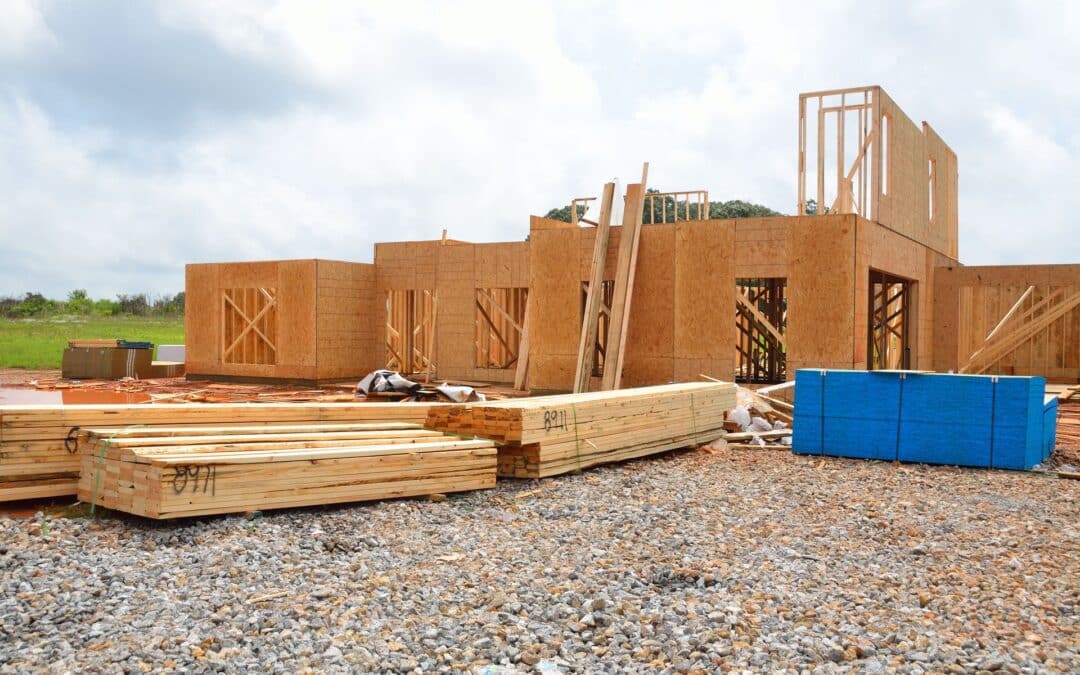This is article is adapted from recent written testimony presented before the U.S. House Financial Services Committee Subcommittee on Housing and Insurance by Alicia Huey, 2023 Chairman of the Board of Directors of the National Association of Home Builders and a custom home builder and developer from Birmingham, Alabama.
Residential construction is one of the most heavily regulated industries in the country. The time and cost invested in complying with regulations impacts a business’s ability to thrive and grow; they also can negatively affect housing affordability and stifle economic development. As noted above, in these challenging economic times, the decrease in housing production and increase in price clearly indicate the need to reduce the regulatory burden on the housing industry.
Residential construction is one of the few industries in which a government-issued permit typically is required for each unit of production. Additional rules create a constricting web of regulatory requirements that affect every aspect of the land development and home building process and add substantially to the cost of construction. The breadth of these regulations is largely invisible to the home buyer, the public, and even the regulators themselves. Nevertheless, they have a profound impact on housing affordability and prevent many families from becoming homeowners.
While onerous building regulations historically have stemmed from legislation such as the Clean Water Act, the Endangered Species Act, the Energy Policy Act, the Occupational Safety and Health Act, the Fair Housing Act, and the Safe Drinking Water Act, government regulators are increasingly citing the need for new or revised regulations to address ESG considerations. Indeed, this Administration’s focus on climate change, social justice, energy efficiency and labor unions all fit within the broader parameters of ESG.
Overreliance on ESG factors often ignores the central tenets of consumer choice, market needs and project feasibility, key considerations that are central to small home building businesses. While many actions have been taken over the past few years to insert ESG considerations into federal policies and regulation, the following are particularly concerning to home builders:
Building Energy Codes
Recent legislation uses the lure of federal dollars to pressure state and local governments into implementing unnecessary ESG policies and regulations, which will drive up housing prices across the country. The Inflation Reduction Act provides $1 billion in grants for state and local governments to adopt costly and restrictive energy codes, such as the 2021 International Energy Conservation Code (IECC). While NAHB supports the adoption of cost-effective, modern energy codes, we oppose any federal funding that prohibits jurisdictions from adopting amendments to the energy code to accommodate local conditions and address cost-effectiveness concerns.
Forcing the adoption of costly and restrictive energy codes to qualify for these grants will exacerbate the current housing affordability crisis and limit energy choice for consumers. Adoption of the 2021 IECC can add as much as $31,000 to the price of a new home yet can take as long as 90 years for the homeowners to see a payback from this investment. Implementation of these grants will result in fewer families being able to achieve the American dream of homeownership.
It is not just the lure of federal funding that is being used to force the implementation of costly and unnecessary energy codes, as the U.S. Department of Housing and Urban Development (HUD) and the U.S. Department of Agriculture (USDA) are considering requiring the 2021 IECC for virtually all new construction supported by HUD and USDA. Such mandates will have an especially negative impact on historically underserved communities and first-time homebuyers, two of the very groups these agencies seek to support and who are highly sensitive to price fluctuations at the low- to mid-price range of the housing market. Builders also face major hurdles under this proposal, including finding qualified inspectors and complying with a patchwork of building standards.
Electrification and Gas Stoves
Concerns about the impacts of climate change have compelled policymakers at all levels to look for ways to cut greenhouse gas emissions (GHG) across all sectors of the U.S. economy. While there are many ways to achieve GHG reductions, many communities have pointed to ESG policies to gain support to pass laws or ordinances that effectively ban the use of natural gas and propane within new construction and existing homes. These efforts are concerning for several reasons.
First, because new construction is already significantly more energy efficient than the existing housing stock, any GHG emissions reductions gained through electrifying new construction would be far less than reductions gained by improving the energy efficiency of existing homes.
Second, although electrification may provide benefits in certain applications, electrification mandates can be costly and infeasible in some areas of the country and create challenges for builders, homeowners and consumers. For example, due to performance limitations of electric heat pumps in colder climates, the continued use of fossil fuel may be the only feasible option in certain circumstances and locations. Likewise, because electrification can result in both increased first costs and higher utility bills, electrification may place additional burdens on the consumer.
A study conducted by the Home Innovation Research Labs in 2021 found that the additional up-front cost to build an all-electric house (as compared to a house with natural gas equipment and appliances) ranged from $3,832-$15,100 depending on climate zone. Importantly, these estimates do not include fees for upgrading electric service or providing community electric infrastructure, which can be substantial.
Finally, electrification policies can adversely impact consumer choice. The recent efforts by federal agencies to consider limiting access to gas stoves ignore consumer preferences and pocketbooks. As home builders, we believe our customers have a right to choose the appliances and energy sources used in their homes. Over 187 million Americans currently use natural gas appliances, saving them an average of $1,068 each year. Gas stoves are used in nearly 40 million homes nationwide and have proven to be a safe, efficient and affordable appliance choice for families for well over a century. The current push to regulate gas stoves will result in negligible health, safety and energy outcomes, but will drastically limit the ability of homeowners to install and use gas stoves in their homes and enjoy the cost savings that come with their use in some areas of the country.
Transformer Standards
The Department of Energy (DOE) has proposed a new rule to increase energy efficiency standards for distribution transformers. The timing of this proposed rule could not be worse and is certain to make an already bad situation worse. If finalized as proposed, manufacturers will be forced to retool production lines to produce new transformers instead of addressing the historic backlog that is hampering development across the country.
Transformers are an essential part of the electrical grid bringing power to homes and businesses. Homes cannot be sold unless a transformer is installed and working, and power is being sent to the home. For the past few years, lead times to obtain transformers have remained stubbornly long, ranging anywhere from 18 to 24 months as global supply chains continue to heal in the wake of the Covid-19 pandemic. Delays in transformer availability and installation are completely halting home building projects in many areas and frustrating recovery efforts in those affected by natural disasters.
In addition, for the home building business, delays result in additional costs. DOE’s proposed rule is particularly troubling because it would dictate that manufacturers increase the efficiency of distribution transformers by a mere one-tenth of a percentage point even though the agency already mandates distribution transformers be manufactured to incredibly high efficiency standards. Importantly, due to the intricate ways transformers are designed and assembled, increasing their efficiency even by a fraction of a percentage point could add months to an already lengthy order-cycle.
Additionally, the proposed rule would require manufacturers to transition to a different type of steel, which is largely untested, less flexible and more expensive. The existing supply of this alternative steel is very limited and mostly foreign-sourced. Energy efficiency standards play an important role in reaching decarbonization benchmarks while transitioning our nation to a clean and increasingly electrified economy. However, as proposed, the rule would delay the realization of these benefits while at the same time exacerbating the current distribution transformer shortage crisis at the expense of housing affordability.
Waters of the U.S.
Home builders and developers remain in a state of regulatory uncertainty regarding the scope of federal jurisdiction over waters of the United States (WOTUS) under the Clean Water Act (CWA). On May 25, 2023, the Supreme Court ruled in Sackett v. Environmental Protection Agency (EPA) that the test the agencies were using to define federal authority was too broad and therefore was impermissible. Since then, the U.S. Army Corps of Engineers (Corps) has simply stopped processing requests for approved jurisdictional determinations (AJDs) while the districts await guidance from Corps’ headquarters on how to proceed. Halting AJDs leads to permitting delays and places another barrier on the nation’s home builders’ ability to provide safe, decent and affordable housing.
The agencies have stated they will provide a new regulatory definition of WOTUS by September 1, 2023, but until then, do not intend to lift the nationwide suspension of AJDs or provide any interim guidance. Land acquisition, permit processing and home building cannot be paused until September; landowners desperately need the agencies to issue interim guidance.
A healthy housing market is critical to a strong and vibrant U.S. economy, and it is contingent upon EPA and the Corps moving forward quickly and affirmatively to clarify the scope of federal CWA jurisdiction and restart the Section 404 approval processes. Sackett established clear, bright lines concerning which aquatic features are not jurisdictional under the CWA. Home builders and the construction industry desperately need clear rules to protect our nation’s waterways and environment while allowing the economy to move forward.
Intersection of the National Flood Insurance Program and the Endangered Species Act
Home builders and developers in California recently learned that the Federal Emergency Management Agency (FEMA) would suspend its issuance of letters of floodplain map revision based on fill under the National Flood Insurance Program (NFIP) across 38 counties in California on July 1, 2023. This suspension impacts countless residential construction, transportation infrastructure, and other planned activities occurring within areas mapped by FEMA as being within the 100-year floodplain and potentially puts at risk tens of thousands of new housing units.
For example, NAHB members from the greater San Francisco Bay area reported over 6,400 planned single-family homes, as well as nearly 800 affordable housing units, that would be impacted. While suspending aspects of the floodplain mapping program does not prohibit NAHB members from building new residential units, even a temporary suspension of FEMA’s floodplain mapping can have significant economic impacts upon home builders, prospective homebuyers and renters alike.
FEMA’s decision to suspend processing certain map change requests is the result of a confidential legal settlement between FEMA and environmental advocates who claimed that the simple act of revising floodplain maps negatively impacts federally protected species or their designated critical habitat under the Endangered Species Act (ESA). NAHB disagrees. FEMA has nationwide policy that requires individuals seeking these revisions to first provide FEMA with documentation that their planned activity either has no impact upon endangered species or they have already met the necessary ESA requirements. That should be sufficient to satisfy any landowners’ ESA obligations.
What makes this issue even more troubling is that FEMA has publicly acknowledged this will be a multiyear suspension while FEMA “consults” with the U.S. Fish and Wildlife Service (USFWS) and the National Marine Fisheries Services (NFMS). A similar process in Washington State took over six years to complete, while in neighboring Oregon, over a decade has passed since FEMA initiated ESA consultation. Importantly, unlike what is occurring in California, FEMA did not suspend the processing of requests in Oregon or Washington or make any changes to the NFIP while it was engaged in the ESA consultation process.
Requiring home buyers to purchase flood insurance for a home purposefully built out of the flood zone will have significant economic impacts. Requiring these home buyers to buy insurance when they do not need it only puts the American Dream of owning a home further out of touch.
Rent Control
NAHB multifamily members are apartment builders, owners and managers who generally operate small businesses. They strive to provide quality, well-maintained and well-managed apartment communities, but doing so is becoming more difficult due to the growing number of ESG-related federal proposals and mandates, such as those included in the White House Blueprint for a Renters Bill of Rights, which are directed at the rental and management policies of privately-owned conventional apartments.
Many of these proposals, particularly with respect to eviction diversion programs, are intended to extend temporary measures implemented during the Covid-19 pandemic. While many of the initiatives proposed in the blueprint are still under consideration and have not been implemented at this time, nevertheless, NAHB is gravely concerned that federal intervention – either directly by statute/regulation or indirectly through pressure on the government-sponsored enterprises to adopt specific lease terms or impose various controls on rents and/or fees, eviction proceedings and tenant screening or federal “source of income protection” laws – will have negative unintended consequences that discourage private sector participation in the conventional rental market.
Apartment owners and managers already are subject to a myriad of tenant protection and fair housing statutes, regulations, administrative policies and case law from all levels of government; additional federal rent and management policy restrictions on private, conventional apartment operations are unnecessary, unwise, and may also jeopardize the financial safety and soundness of the properties.
For example, multifamily properties are underwritten to operate off of the rents. Rent control policies, including those that would cap the percentage of annual rent increases, create disincentives to new supply and insurmountable hurdles to keep pace with operating and maintenance costs. Because such government policies are so disruptive, builders avoid working in jurisdictions with rent control policies in place.
Property/Casualty Insurance
Due to increasing perceived risks and pressure to address ESG, among other reasons, many private insurance companies are denying the sale of new property and casualty insurance policies, declining to renew existing coverages, and/or drastically raising policy rates in certain states. To make matters worse, reinsurance companies are rapidly increasing the costs of insurance for insurance companies on all lines of coverage due to recent national and global disasters, burgeoning bureaucratic expenses and to make up for reduced participation.
Taken together, it is becoming increasingly more difficult for both existing and potential new homeowners to secure available and affordable insurance, which is impacting the ability of our members to sell their homes.
Certain borrowers are required to obtain and maintain homeowners’ insurance as a condition of their mortgages. The inability to purchase or maintain policies because of unaffordable rate hikes or insurance companies declining to renew policies is becoming a growing issue that is impacting housing affordability and the ability of many to become homeowners. Although insurance is regulated at the state level, NAHB believes the federal government has an obligation to ensure insurance is available and affordable in all areas of the country.
Indeed, the Federal Insurance Office (FIO) within the U.S. Department of the Treasury is charged with monitoring all aspects of the insurance sector, including the extent to which underserved communities have access to affordable insurance products. Clearly, solving the insurance issue is an important and key aspect of addressing the housing affordability challenge.













This article is totally off base, inaccurate, and disturbingly biased. Climate change concerns, energy efficiency, and healthy indoor air quality are major concerns of the US public, and home builders who fight against compliance with regulations to improve these attributes are doing their home buyers a total disservice. Energy efficiency saves money and lowers the cost of home ownership. Climate resilience saves money and can avoid costly disasters. And your numbers of the difference between an all electric home and a duel fuel home are totally wrong. Builders are building all electric homes in New Mexico for close to the same cost, or in some cases even lower cost than traditional duel fuel homes, and giving the homeowners huge savings in energy bills. Not to mention healthy indoor quality and peace of mind. Do your homework and get the facts!
Of course, the government ruined any type of regulations on building. There’s many stupid regulations that are holding up production. But I don’t think that’s the sole reason. Builders like high demand. There’s not much selling involved in a price gouge the hell out of their customers.
I might agree that some regulations are either redundant or excessive. However, it is usually developers who create their own headaches by trying to avoid regulations, fighting them, rather than agreeing to just follow the rules. I’ve been through the EIR process, and it almost never stops or even modifies development proposals, and mitigation agreements are often just to buy steep lands or some wetlands that likely would not have been developed anyway due to the impractical site conditions and expenses.
We cannot blame developers for every problem, but they always promote excessive development, despite the terrible results of over-crowded cities, fewer parks, almost no yard space, almost no parking, few or no green spaces or trees, yet still high costs for getting less space and a lower quality of life.
California has been moving towards become a series of concrete canyons of tall buildings, often blocking out any views of the hills and mountains. It’s demoralizing. Developers who make big bucks on massive developments love to live in gated communities with large expanses of open spaces (and NO low income housing), but they call everyone else nimbys if we want any semblance of open spaces for our neighborhoods. Quite the double standard.
The truth is that there is not a housing shortage, there are simply too many humans, with more population being added every year. That is the core problem, and no one (least of all developers and realtors) wants to talk about math and unsustainable population growth. We have allowed massive development, and more people every year, which simply absorbs available housing supplies, always.
No one says that California is nicer or more affordable now than it was in the 1930’s thru the 1950’s, and more building won’t change affordability for very long, if at all.
If development is to be allowed at all, then use abandoned retail & office spaces and abandoned factories and warehouse zones. Los Angeles has miles of abandoned, old buildings right near downtown and near major work centers and near rail lines. Other cities have similar abandoned zones that are not being utilized as intended (nor as zoned), so convert those areas (or condemn them) and rehab existing buildings wherever possible before gobbling up the last undeveloped lands.
California’s population boom has been ongoing since the 1820’s, and more building has only brought in more people, year after decade. High birth rates for 500 years since 1492 has resulted in the problems we have been seeing, which is why Euro-Americans had to keep moving westward as lands further east were already taken.
California is grotesquely over-populated, nearly 40 million in 2023, which is about 1 in 8 U.S. residents living in California. High populations means higher costs of living, including higher housing costs. It’s just math and common sense.
California has 4x more people now than it did in the early 1950’s.
It’s crazy and has never been sustainable.